
Shopping is an activity in which a customer browses the available goods or services presented by one or more retailers with the potential intent to purchase a suitable selection of them. A typology of shopper types has been developed by scholars which identifies one group of shoppers as recreational shoppers, that is, those who enjoy shopping and view it as a leisure activity.
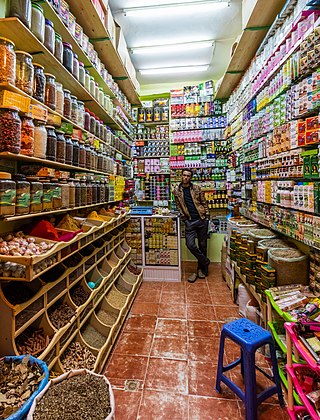
Retail is the sale of goods and services to consumers, in contrast to wholesaling, which is sale to business or institutional customers. A retailer purchases goods in large quantities from manufacturers, directly or through a wholesaler, and then sells in smaller quantities to consumers for a profit. Retailers are the final link in the supply chain from producers to consumers.

Sears, Roebuck and Co., commonly known as Sears, is an American chain of department stores founded in 1892 by Richard Warren Sears and Alvah Curtis Roebuck and reincorporated in 1906 by Richard Sears and Julius Rosenwald, with what began as a mail ordering catalog company migrating to opening retail locations in 1925, the first in Chicago. In 2005, the company was bought by the management of the American big box discount chain Kmart, which upon completion of the merger, formed Sears Holdings. Through the 1980s, Sears was the largest retailer in the United States. In 2018, it was the 31st-largest. After several years of declining sales, Sears's parent company filed for Chapter 11 bankruptcy on October 15, 2018. It announced on January 16, 2019, that it had won its bankruptcy auction, and that a reduced number of 425 stores would remain open, including 223 Sears stores.

The T. Eaton Company Limited, later known as Eaton's and then Eaton, was a Canadian department store chain that was once the largest in the country. It was founded in 1869 in Toronto by Timothy Eaton, an immigrant from what is now Northern Ireland. Eaton's grew to become a retail and social institution in Canada, with stores across the country, buying-offices around the globe, and a mail-order catalog that was found in the homes of most Canadians. A changing economic and retail environment in the late twentieth century, along with mismanagement, culminated in the chain's bankruptcy in 1999.
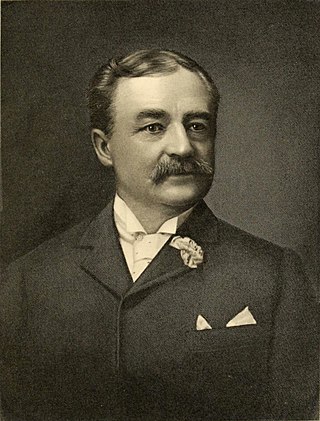
Aaron Montgomery Ward was an American entrepreneur based in Chicago who made his fortune through the use of mail order for retail sales of general merchandise to rural customers. In 1872 he founded Montgomery Ward & Company, which became nationally known.

Montgomery Ward is the name of two successive U.S. retail corporations. The original Montgomery Ward & Co. was a world-pioneering mail-order business and later a leading department store chain that operated between 1872 and 2001. The current Montgomery Ward Inc. is a national online shopping and mail-order catalog retailer that started several years after the original Montgomery Ward shut down.

The Very Group Limited is a multi-brand online retailer and financial services provider in the United Kingdom and Ireland. Its head offices are based in the Speke area of the city of Liverpool, England. The brand was established in November 2005 as a result of the merger of the former Littlewoods and Shop Direct companies. The retailer was known as Littlewoods Shop Direct Group until a corporate rebranding to Shop Direct Group in May 2008. In 2013, the company rebranded to Shop Direct, dropping the 'group' from its name. Shop Direct rebranded themselves to The Very Group in 2020.

Online shopping is a form of electronic commerce which allows consumers to directly buy goods or services from a seller over the Internet using a web browser or a mobile app. Consumers find a product of interest by visiting the website of the retailer directly or by searching among alternative vendors using a shopping search engine, which displays the same product's availability and pricing at different e-retailers. As of 2020, customers can shop online using a range of different computers and devices, including desktop computers, laptops, tablet computers and smartphones.
Consumers Distributing was a catalogue store in Canada and the United States that operated from 1957 to 1996. At its peak, the company operated 243 outlets in Canada and 217 in the United States, including stores in every province in Canada and in the states of New Hampshire, Massachusetts, Connecticut, New York, New Jersey, Pennsylvania, Maryland, California and Nevada.
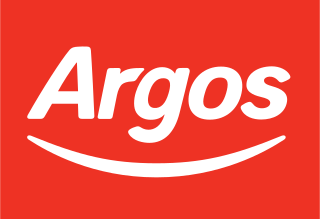
Argos Limited is a British catalogue retailer operating in the United Kingdom and formerly in the Republic of Ireland, acquired by Sainsbury's supermarket chain in 2016. It was established in November 1972 and is named after the Greek city of Argos. The company trades both through physical shops and online, with 29 million yearly shop customers, and nearly a billion online visitors per annum. It has also franchised overseas to countries such as China.
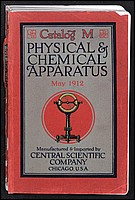
Mail order is the buying of goods or services by mail delivery. The buyer places an order for the desired products with the merchant through some remote methods such as:
Service Merchandise was a retail chain of catalog showrooms carrying jewelry, toys, sporting goods and electronics. The company, which first began in 1934 as a five-and-dime store, was in existence for 68 years before ceasing operations in 2002.

Spiegel was an American direct marketing retailer founded in 1865 by Joseph Spiegel. Spiegel published a catalog, like its competitors Sears and Montgomery Ward, which advertised various brands of apparel, accessories, and footwear, as well as housewares, toys, tools, firearms, and electronics. Their company brands included Newport News, Shape FX, and Old Kraftsman, among others. They also operated brick-and-mortar stores.
Home shopping is the electronic retailing and home shopping channels industry, which includes such billion dollar television-based and e-commerce companies as Shop LC, HSN, Gemporia, TJC, QVC, eBay, ShopHQ, Buy.com and Amazon.com, as well as traditional mail order and brick and mortar retailers as Hammacher Schlemmer and Sears, Roebuck and Co. Home shopping allows consumers to shop for goods from the privacy of their own home, as opposed to traditional shopping, which requires one to visit brick and mortar stores and shopping malls.
Fashion merchandising can be defined as the planning and promotion of sales by presenting a product to the right market at the proper time, by carrying out organized, skillful advertising, using attractive displays, etc. Merchandising, within fashion retail, refers specifically to the stock planning, management, and control process. Fashion Merchandising is a job that is done world- wide. This position requires well-developed quantitative skills, and natural ability to discover trends, meaning relationships and interrelationships among standard sales and stock figures. In the fashion industry, there are two different merchandising teams: the visual merchandising team, and the fashion merchandising team.
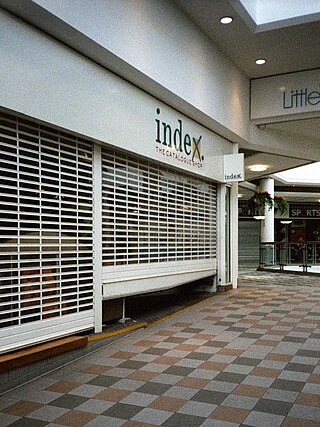
Index was a catalogue retailer in the United Kingdom, that was owned by Littlewoods from 1985 until 2005. Many Index stores were attached to Littlewoods stores. It was a well known retailer in the 1980s and the 1990s, but sales declined in the noughties and it lost many customers to its main rival, Argos.

Omnichannel retail strategy, originally also known in the U.K. as bricks and clicks, is a business model by which a company integrates both offline (bricks) and online (clicks) presences, sometimes with the third extra flips.

The economics of Christmas are significant because Christmas is typically a high-volume selling season for goods suppliers around the world. Sales increase dramatically as people purchase gifts, decorations, and supplies to celebrate. In the U.S., the "Christmas shopping season" starts as early as October. In Canada, merchants begin advertising campaigns just before Halloween, and step up their marketing following Remembrance Day on 11 November. In the UK and Ireland, the Christmas shopping season starts from mid-November, around the time when high street Christmas lights are turned on. In the United States, it has been calculated that a quarter of all personal spending takes place during the Christmas/holiday shopping season. Figures from the U.S. Census Bureau reveal that expenditure in department stores nationwide rose from $20.8 billion in November 2004 to $31.9 billion in December 2004, an increase of 54 percent. In other sectors, the pre-Christmas increase in spending was even greater, due to a November through December buying surge of 100% in bookstores and 170% in jewelry stores. In the same year employment in American retail stores rose from 1.6 million to 1.8 million in the two months leading up to Christmas. This means that while consumers might spend more during this season, they also are given increased employment opportunities as sales rise to meet the increased demand.
Off-price is a trading format based on discount pricing. Off-price retailers are independent of manufacturers and buy large volumes of branded goods directly from them. The off-price retail model relies on the purchase of over-produced, or excess, branded goods at a lower price, thus being able to sell to consumers at a discount compared to other stores which purchased an initial run. Among the largest retailers of this type are TJX Companies and Ross Stores. The model is more common in countries that import fashion-oriented or household goods, as the discount role in producer countries is usually filled by factory outlets or small-scale open-air marketplaces.















